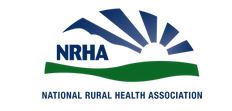 A listing of resources with demonstrated effectiveness organized by population served, approaches, and location – including urban vs. rural.
A listing of resources with demonstrated effectiveness organized by population served, approaches, and location – including urban vs. rural.
Here You Can Read About Telehealth and the End of the PHE
The COVID-19 public health emergency (PHE) officially ended on May 11, but many Medicare telehealth flexibilities remain in place temporarily. The Department of Health and Human Services (HHS) released a fact sheet to provide clarity around federal telehealth flexibilities. HHS will release additional guidance on updates and timing relating to the continuation of these flexibilities in the coming weeks. Learn more about telehealth policy changes with the end of the PHE. Earlier this spring, NRHA sent a letter to HHS on PHE flexibilities we would like to see made permanent, including telehealth provisions, and we continue to advocate for legislative change in Congress.
GAO Released a Report on Rural Health Care Accessibility
The Government Accountability Office (GAO) released a report titled, “Why Health Care is Harder to Access in Rural America.” The report found many rural residents face several challenges, including fewer health care providers, longer travel distances to get to health care, fewer transportation options, and less broadband internet. The report recommends that federal agencies learn more about the needs of rural residents and address the gaps in information regarding the healthcare needs of people living in rural areas. Join NRHA in fighting for rural health.
Good to Know! Read How PHE is Unwinding Resources
CMS Has Proposed a Rule on SNF Prospective Payment System: Comments Have Been Requested
CMS released its fiscal year (FY) 2024 Skilled Nursing Facility (SNF) Prospective Payment System proposed rule. The proposed rule includes a 3.7% increase in payments to SNFs in FY 2024. This rule does not include the anticipated minimum staffing standards for nursing homes, which are expected later this spring. For more information, you can find NRHA’s full summary here. Please find CMS’ fact sheet here.
CMS Releases Inpatient Prospective Payment System Proposed Rule: Comments Have Been Requested
CMS released the fiscal year (FY) 2024 Inpatient Prospective Payment System (IPPS) proposed rule. NRHA’s full summary is available here. CMS also released a fact sheet. Key provisions include:
- Increased IPPS payments by 2.8% overall and 3.3% for rural hospitals.
- Rural Emergency Hospital (REH) provisions include codifying conversion guidance and allowing REHs to be Medicare Graduate Medical Education eligible sites.
- The proposed policy that hospitals reclassified as rural must be treated like geographically rural hospitals for wage index calculations.
- A safety net hospital request for information.
CMS Has Proposed Rules Regarding Medicaid and CHIP: Comments Have Been Requested
CMS released two proposed rules regarding Medicaid and Children’s Health Insurance Program (CHIP): Ensuring Access to Medicaid Services and Medicaid and CHIP Managed Care Access, Finance, and Quality. NRHA released summaries for both the access and managed care proposed rules. Comments on both proposed rules are due July 3, 2023, via regulations.gov.
NIH-funded Study Highlights the Financial Toll of Health Disparities in the United States
Ground-breaking study provides national and state-level estimates of the economic burden of health disparities by race and ethnicity and educational levels.
New research shows that the economic burden of health disparities in the United States remains unacceptably high. The study, funded by the National Institute on Minority Health and Health Disparities (NIMHD), part of the National Institutes of Health, revealed that in 2018, racial and ethnic health disparities cost the U.S. economy $451 billion, a 41% increase from the previous estimate of $320 billion in 2014. The study also finds that the total burden of education-related health disparities for persons with less than a college degree in 2018 reached $978 billion, about two times greater than the annual growth rate of the U.S. economy in 2018.
The findings from this study by researchers from NIMHD; Tulane University School of Public Health and Tropical Medicine, New Orleans; Johns Hopkins Bloomberg School of Public Health, Baltimore; Uniformed Services University, Bethesda, Maryland; TALV Corp, Owings Mills, Maryland; and the National Urban League were published in JAMA.
This study is the first to estimate the total economic burden of health disparities for five racial and ethnic minority groups nationally and for all 50 states and the District of Columbia using a health equity approach. The health equity approach set aspirational health goals that all populations can strive for derived from the Healthy People 2030 goals. It establishes a single standard that can be applied to the nation and each state, and for all racial, ethnic, and education groups. It is also the first study to estimate the economic burden of health disparities by educational levels as a marker of socioeconomic status.
“The exorbitant cost of health disparities is diminishing U.S. economic potential. We have a clear call to action to address social and structural factors that negatively impact not only population health, but also economic growth,” said NIMHD Director Eliseo J. Pérez-Stable, M.D.
Transition Forward: Updated Medicaid Unwinding Resources Now Available

On May 11, 2023, the federal Public Health Emergency (PHE) for COVID-19 expired. Some Medicaid services, such as telehealth flexibilities, will not be affected and have been extended through December 31, 2024, as indicated in The Consolidated Appropriations Act of 2023.
There are certain Medicare and Medicaid waivers, broad flexibilities for health care providers, and coverage for COVID-19 testing that will be affected.
To better assist with the impact PHE unwinding will have on different areas of people’s health, the Centers for Medicare & Medicaid Services Office of Minority Health (CMS OMH) updated its Coverage to Care (C2C) resources to help the consumers you serve understand their health coverage.
Updated C2C Resources Available
Ahead of PHE Unwinding, these resources will help consumers prepare to transition forward and continue to feel confident in how they will receive coverage for COVID-19 testing and telehealth services.
The following resources are now available on the C2C website:
- C2C COVID Overview Factsheet Explains basics of health coverage for protecting you and your family, Medicare updates, Medicaid renewal (new!), and more.
- C2C Telehealth Patient Toolkit Serves as a guide to explain telehealth basics and help patients and their families properly navigate telehealth services.
- C2C Telehealth Provider Toolkit Provides informational tips to assist providers with implementing telehealth services to their patients.
Spread the Word: Renewing Medicaid/CHIP Coverage
Additionally, to ensure Medicaid and CHIP beneficiaries are up to date on the Medicaid continuous enrollment condition that expired on March 31st, CMS has created many resources, including the Anticipated 2023 State Timelines for Initiating Unwinding-Related Renewals as of February 24, 2023 (PDF, 93 KB, 2 pp).
For the most updated information about Medicaid and CHIP renewal processes, we encourage all enrollment assisters and outreach workers to communicate with Medicaid and CHIP beneficiaries the following three important messages:
- Update your contact information – Make sure the state Medicaid agency or CHIP program has your current mailing address, phone number, email address, or other contact information so they can contact you about your Medicaid or CHIP renewal
- Check your mail – State Medicaid agencies or CHIP programs will mail you a letter about your Medicaid or CHIP coverage
- Complete your renewal form (if you get one) – Fill out the form and return it to the state Medicaid agency or CHIP program right away to help avoid a gap in your Medicaid or CHIP coverage
Make sure to review the updated communications toolkit, Medicaid and CHIP Continuous Enrollment Unwinding (PDF, 3.2 MB, 21 pp) and the Medicaid Unwinding Toolkit Supporting Materials (ZIP, 47 MB) to help inform people with Medicaid or CHIP about steps they should take to renew their coverage or find other health care options. *People who no longer qualify for Medicaid or CHIP are advised to visit Healthcare.gov to find out if they are eligible to enroll in a Marketplace plan.
Preparing for Medicaid Unwinding is important for all. To learn more about the Unwinding and Medicaid and CHIP Renewals, visit CMS OMH at https://www.cms.gov/about-cms/agency-information/omh/resource-center/moving-forward-after-covid-19-public-health-emergency..
New Brief Highlights Population Changes in Pennsylvania Municipalities

Today, the U.S. Census Bureau released the Vintage 2022 population estimates for metropolitan and micropolitan statistical areas and local governmental units, including incorporated places, minor civil divisions, and consolidated cities. They also released housing unit estimates for the nation, states and counties. Learn more and access the data here.
We’ve created a brief focused on the population change in Pennsylvania municipalities that visualizes changes between 2020 and 2022.
Read more on our Research Briefs page or click here to go straight to the brief.

